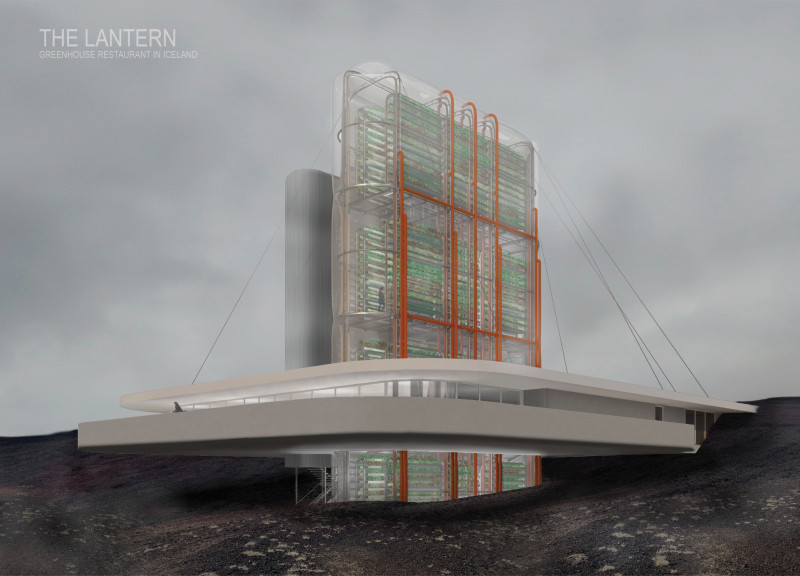5 key facts about this project
The Lantern Greenhouse Restaurant is located in the Hverfjall area of Iceland, a region known for its volcanic landscape and black sand. Serving as a culinary destination, it emphasizes a strong connection to the natural environment. The design focuses on the greenhouse as the main element, creating a space that invites interaction with the site and promotes sustainable practices in food production.
Building Experience
Visitors approach the restaurant via a gradual ascent up the volcanic mound. The ground's texture provides a tangible link to the geological features of the area. This journey is purposeful, designed to culminate in a viewpoint that offers panoramic views of the Hverfjall landscape. As guests navigate through the space, they experience a progression that intertwines architecture with the surrounding topography.
Sustainable Practices
The greenhouse plays a vital role in the restaurant's function, providing fresh ingredients through a vertical agriculture system. This system is designed to be efficient, operating within a closed loop that recycles water and nutrients. By doing so, it highlights modern practices in food production while integrating smoothly into the restaurant's culinary offerings.
Materiality and Light
Natural light significantly influences the interior atmosphere. Strategically placed lightwells allow daylight to illuminate the greenhouse, enhancing the spaces within. The use of glass walls exposes the geological features of the site, creating a connection between the interior and the outside world. This design choice encourages a sense of closeness to the natural environment.
Energy Efficiency
ETFE (Ethylene Tetrafluoroethylene) is used as an inflatable skin that serves as a lightweight facade. This material helps manage solar gain while being fully recyclable, aligning with the project's commitment to sustainability. Additionally, the building incorporates geothermal energy systems, which utilize local resources to improve energy efficiency.
The flow of the restaurant encourages interaction with the greenhouse. Pathways lead to various observation points and terraces. This configuration enhances the connection to the rugged landscape, allowing visitors to appreciate the relationship between cultivated spaces and the natural environment.






















































